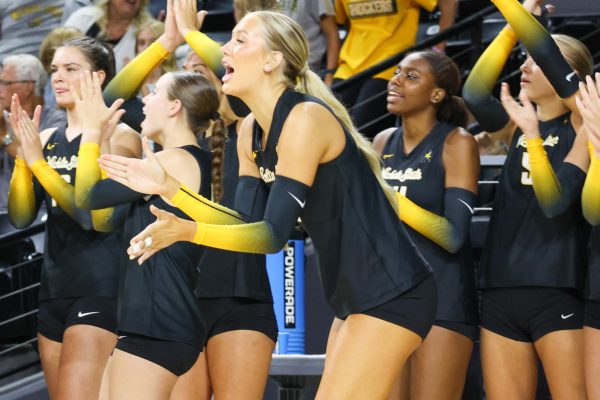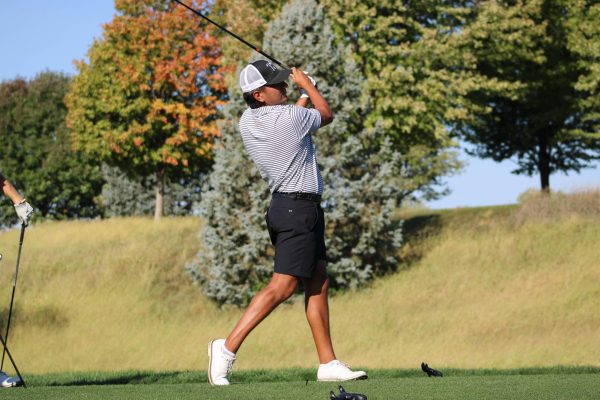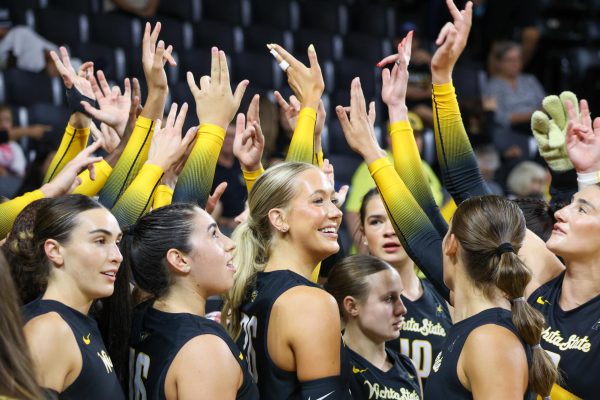Shockers on display in Wichita Sports Hall of Fame
Located in a small building at 4700 E. Central, inside The Wichita Sports Hall Of Fame, is a history lesson and artifacts of all-sports Wichita.
The Shockers have a large presence in the hall.
Paul Savage started the Wichita Sports Hall and Fame and Museum in 2002 with his own money and memorabilia he collected over the years. The museum does not have any major contributors from outside sources. All funding comes out of Savage’s pocket.
“We get donations every once in a while,” Savage said.
Anyone who wants to donate money or artifacts can call The Sports Hall of Fame and Museum office.
Qualifications for entrance to the Hall of Fame consist of five general categories for election: individuals from Wichita that achieved excellence through sports in Wichita; individuals from Wichita that achieved excellence through sports outside of Wichita; individuals from outside Wichita that achieved excellence through sports in Wichita; Teams from Wichita that achieved athletic excellence; Organizations from Wichita that achieved athletic excellence.
Every May, a new class is entered into the Hall of Fame. “Wichita has such a great history in sports and Wichita State is a big part of it,” Savage said.
The number of former Shocker athletes and coaches elected to the Wichita Sports Hall of Fame is vast. They include Prince McJunkins, the first player in NCAA history to rush for 2,000 yards and pass for 4,000 yards in the same football season. The mobile quarterback held or shared career records for most points, rushing attempts, total offense and plays at WSU.
Long before he was known for choke slamming people through wrestling rings, Paul Wright slammed basketballs through hoops. The 7’1” big man suited up for the Shockers basketball team for one season in 1991. Wright is now known as WWE superstar the “The Big Show.”
Shocker Baseball also has a presence in the Hall. Former Shocker baseball player Joe Carter is in the Hall. He is a three time All-American and 1981 Player of the Year. He hit 58 home runs and had a career batting average of .430 at WSU.
Once the highest paid player in baseball, Carter played 16 seasons in the Majors for two teams, Cleveland and Toronto. Carter’s career bating average was .259 with 396 home runs. Carter had a big part in helping the Toronto Bluejays win back-to-back World Series titles by hitting a home run in the ninth inning to clinch the 1993 World Series.
WSU has had its share of legendary coaches come through and coach on campus.
In 1979, Willie Jeffries was named head coach of the WSU Football team. Jeffries’ time in Wichita was historical not because of the number of wins and loses, but because he became the first African American head football coach in the NCCA Division 1 history. Jefferies went on to finish his career with a 179-132-6 record overall. He was elected in to the Hall of Fame in 2009.
Duane Charles Parcells starred as linebacker at WSU. He was drafted in 1964 in the seventh round as the 89th pick, but an injury prevented him from playing football. As a result he spent one year at WSU as a linebackers coach in 1965.
Parcells would start going by the name Bill and go on to have a successful coaching career. Parcells lead the New York Giants to two Super Bowl victories in Super Bowl XXI and XIV. Parcells also lead the New England Patriots to the Super Bowl XXXI, but lost to the Green Bay Packers 58-21. Parcells is now Vice President of Operations for the Miami Dolphins.
The 1970 WSU Football team was the first team inducted in The Sports Hall as a tribute to 31 Shocker players, coaches, staff, and administrators who died in a plane crash in Colorado in 1970. A piece of the plane and team uniform and copy of the newspaper when the crash happened are on the display.
For more information, visit http://www.wichitahof.com/.







